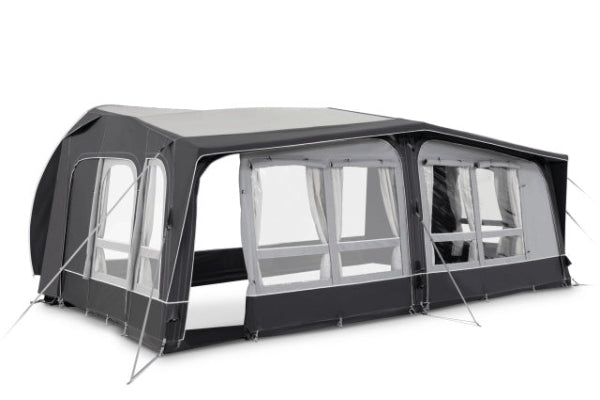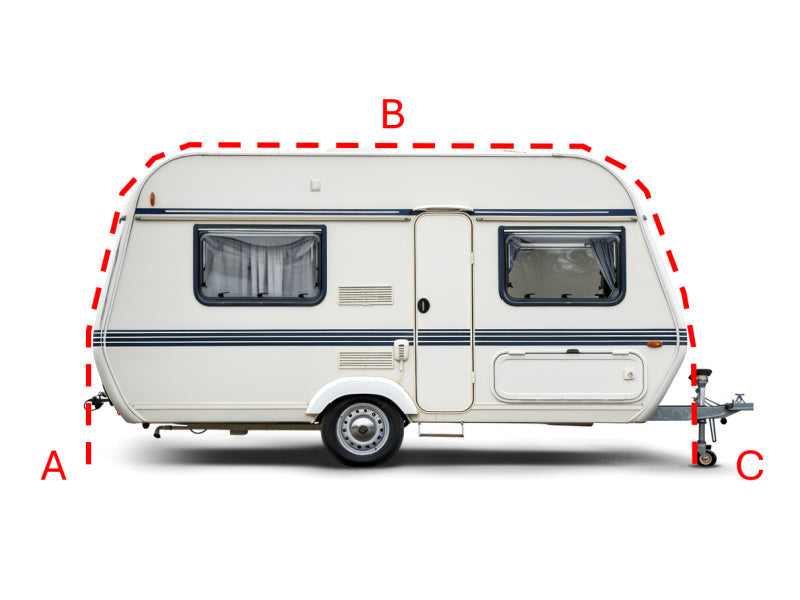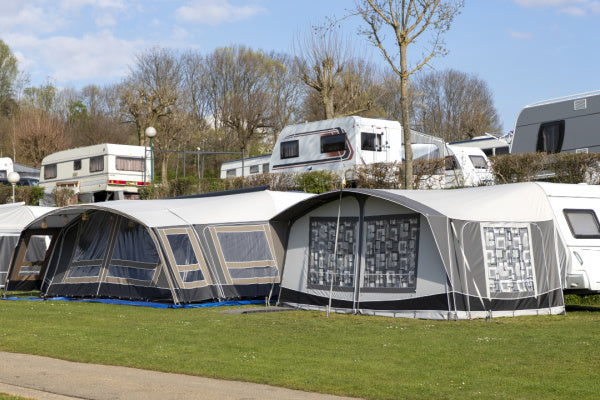Can Caravan Awnings Affect Windows?
Ever wondered if those lovely caravan awnings could be secret window menaces? Well, yes - they absolutely can affect your windows! From pressure damage to weather-related issues, your awning might be up to more mischief than you'd think. But don't pack away that awning just yet - with proper installation and care, you can avoid any drama.
Potential Impact
Blocked Sunlight and Views
The relationship between awnings and natural light deserves careful attention. Many caravan enthusiasts discover this the hard way when their cosy morning reading spot suddenly becomes too dim for comfort.

Awnings cast shadows that vary throughout the day, creating different lighting patterns inside your caravan. During winter months, when natural light is precious, poorly positioned awnings might transform your bright living space into a gloomy cave.
The impact goes beyond mere darkness. Window plants might struggle without adequate sunlight. Your ability to enjoy scenic views - often a primary reason for caravanning - could be compromised by incorrectly positioned awnings.
Modern caravan designs actually factor in natural light patterns, making it crucial to understand how awning placement affects these carefully planned features.
Increased Heat Build-up
Heat management becomes particularly tricky when dealing with awnings and windows. The space between an awning and window can act like a miniature greenhouse.
During summer months, this trapped heat poses several challenges. Window seals may experience increased stress due to temperature fluctuations. Interior temperatures can rise unexpectedly, forcing air conditioning systems to work harder.
Professional caravan technicians often report seeing damaged window seals in caravans where awnings have created persistent heat pockets. This heat build-up affects not just comfort but also energy efficiency.
The problem becomes more pronounced in static caravans left unattended for extended periods. Without regular ventilation adjustments, heat can accumulate to potentially damaging levels.

Damage from Wind and Rain
Weather-related impacts present some of the most significant challenges for caravan windows with awnings. Strong winds can transform even well-secured awnings into window-threatening hazards.
The repeated motion of awnings in windy conditions creates constant pressure changes against window surfaces. This mechanical stress tests the durability of window frames and seals over time.
Rainfall introduces additional complexities. Water running off awnings might concentrate into streams, directing excessive flow onto specific window areas. This concentrated water flow can find weaknesses in window seals more easily than natural rainfall.
Storm conditions multiply these risks. The combination of wind and rain can create pressure differentials that stress window installations beyond their design parameters.
Minimising Impact
Awning Positioning and Size
Proper positioning stands as the foundation of harmonious awning-window relationships. Distance matters significantly - too close, and windows suffer from heat and pressure; too far, and the awning loses effectiveness.
The size selection process requires careful measurement and planning. Oversized awnings catch more wind and create larger shadow areas than necessary. Undersized ones fail to provide adequate protection.
Professional installation makes a substantial difference in long-term performance. Correct tensioning helps prevent wind damage while maintaining proper spacing from windows.
Modern awning designs offer adjustable features that help optimise positioning throughout the year. These adaptable systems allow for seasonal adjustments without compromising window protection.
Regular inspection of awning fixtures ensures they maintain proper positioning. Even small shifts in mounting points can lead to unwanted window impacts over time.

Window Features
Strategic use of window features helps mitigate awning-related challenges. Quality blinds and curtains provide an additional defence layer against heat build-up and light management.
Double-glazed windows demonstrate superior resilience when dealing with awning-induced pressure changes. Their robust construction helps maintain seal integrity under varying conditions.
Ventilation systems play a crucial role in managing the awning-window relationship. Proper airflow prevents moisture accumulation and reduces heat build-up between awnings and windows.
Regular maintenance of window seals proves essential for long-term protection. Seal deterioration can accelerate when combined with awning-related stresses.
Professional window treatments can enhance resistance to awning-related impacts. UV-protective films and reinforced seals offer additional protection against common issues.
Temperature monitoring systems help identify potential problems before damage occurs. These tools alert owners to unusual heat build-up or condensation issues.
The careful selection of window accessories should consider their interaction with planned awning configurations. Some features work better than others under awning coverage.
Seasonal adjustments to window protection strategies help maintain optimal performance throughout the year. Different challenges emerge as weather patterns change.
Regular cleaning of both windows and awnings prevents debris accumulation that could compromise window protection. Build-up between awnings and windows creates additional stress points.
Documentation of window condition helps track any awning-related impacts over time. This information proves valuable for maintenance planning and prevention strategies.
Through careful attention to these factors, caravan owners can maintain healthy windows while enjoying the benefits of their awnings. Success lies in understanding the relationship between these components and taking proactive steps to protect them.
Other content you might like:
- How to extend a caravan awning
- Should caravan awning legs be up or down?
- Can you put a caravan awning up in the rain?
- Do mud flaps go in or out of awning?
- How to stop my caravan awning from sagging?
- How do I stop my awning from blowing away?
- Can caravan awnings cause problems?
- Can caravan awnings cause damp problems?
- Can caravan awnings affect the environment?
- Can caravan awnings be recycled?





Leave a comment